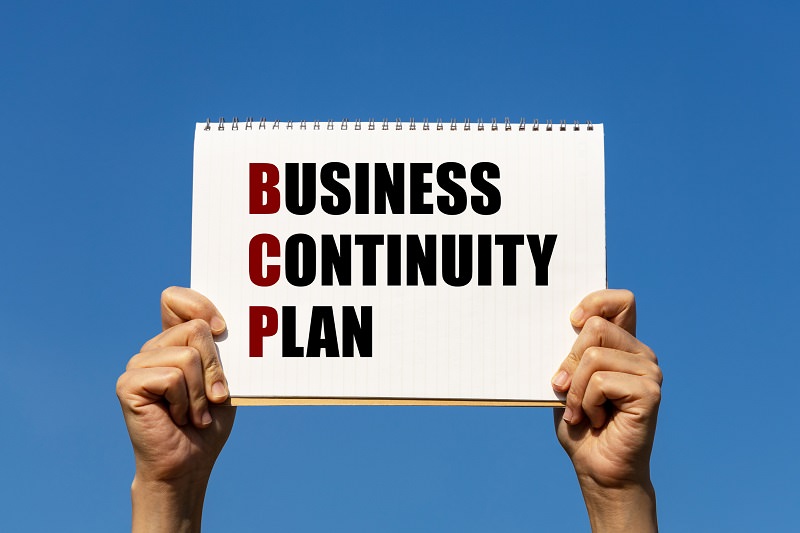Disasters are inevitable. They strike at any moment and can affect any organization, including businesses. The last thing you’d want to do when they occur is panic or not know the steps to take to recover.
A business continuity plan gives you the directions and processes your firm can follow during a crisis. It handles all kinds of disruptions, from minor to severe threats. With it, you can maintain your business operations by mitigating financial losses and developing customer confidence.
When clients see that you can respond and overcome any crisis, they trust your brand. Also, a business continuity plan preserves your reputation and gives you a competitive edge. With that in mind, here are four steps to build a solid business continuity plan (BCP):
Evaluate Potential Risks
The first step in continuity planning is risk assessment. In this step, you identify the potential internal and external threats to your company that may affect your supply chain, employees, finances, customers, reputation, and overall performance.
Also, you can identify the potential origin of these threats, the likelihood of each happening, and the severity of their consequences. Finally, this evaluation allows you to develop steps to prevent these crises, manage the risks, or lessen their impacts.
The risks affecting your business vary depending on your industry and location. However, some common disruptors in most industries include the following:
- Cybersecurity Threats: Cyber-attacks like passwords, denial of service, phishing, malware-based attacks, etc., can result in lost business or confidential data. They can disrupt your business operations, damage your reputation, or even lead to loss of finances. Knowing how each occurs enables you to have tight security measures.
- Natural Disasters: Disasters like floods, strong winds, hurricanes, wildfires, and earthquakes may occur and affect your business or supply chain. They may threaten your employees’ safety or cause physical damage that can interrupt your business activities, resulting in losses.
- Power Outage: Unexpected electrical power loss can also affect your business. It affects communication and power supply in your firm.
A well-conducted risk evaluation gives you all the insights required to create an effective subsequent plan. You can hire Steadynetworks.com for better preventative measures that can protect your operations.
Carry Out a Business Impact Analysis
After identifying the potential risks that can affect your business, you can conduct a business impact analysis (BIA). BIA forecasts the effects of interruption of business processes and operations and gives you the information you require to create recovery policies.
To conduct an effective BIA, you must do the following:
- Set Up a Business Impact Crew: Carrying out a BIA alone can be tedious and time-consuming. Therefore, organize a team that’ll help obtain seamless, effective results.
- Determine Essential Business Procedures: Next, identify the areas of your business that are most crucial to the continuing activity. To do this, list all the departments, the resources they require, and their impact on the rest of the company.
- Set up a Questionnaire: You can create questions and ask your employees to answer them. The data you collect can help you in your analysis. For instance, you may know how specific threats can affect every department in your organization.
- Examine the Data and Develop a Report: Review the information in the questionnaires, identify the most constant responses and concerns, and prepare a report for your key findings. You can use this information to determine how long your business can last without performing affected activities.
After obtaining all relevant information, you can execute recovery tactics and know the measures to take during a crisis. For instance, you can devise how to meet customer demands for your products and services if a disaster destroys your facility.
Sketch Your Plan
Another crucial step in building a solid continuity business plan is writing and processing it stepwise. Below are some aspects of an effective BCP:
- Potential risks within and outside your business and their impacts
- An evaluation of each vital function within your company
- A list of specific mitigation strategies that can help protect your firm
- Appropriate responses to identified risks and recovery strategies
- Employees, customers, suppliers, and partners’ contact information
- Names and roles, and responsibilities of every member of the plan
These are just some of the vital information your BCP must have. However, you can add other aspects that can yield an actionable plan.

Try Out Your Plan
There must be more than a written plan to prepare your business for a disaster or interruption. It would help if you ascertained that your plan works by trying it out. Testing also enables you and your team to practice approaching an occurrence in real-time and constantly validate and upgrade your plan. Ensure to involve every party in this step and correct every mistake.
After that, keep testing and executing changes until you obtain effective and reliable outcomes. Remember, business changes can affect your plan. Therefore, continue revising it, keeping it up-to-date with your business demands.
Conclusion
Disasters and business interruptions happen suddenly. You can lose customers’ trust, brand reputation, and finances when you don’t prepare for them. Thankfully, a business continuity plan enables you to be prepared for any crisis and face it confidently whenever it strikes. It lets you know the potential risks and how to mitigate and overcome them.
Use the above tips to create a solid BCP, have peace of mind knowing that when disaster strikes, you have an escape strategy, and ultimately achieve business success in any situation.

Hi! This is Ifama. I am a student and giving my services in SEO. I have a lot of experience in digital marketing. Travelling is my hobby and I love visiting different hilly areas and doing adventures.
Leave a Reply